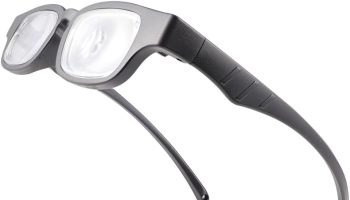Pain, especially the chronic type, can feel like an unwelcome companion that never seems to leave our side. It lingers, persistent and relentless, sapping our energy, our focus, and our happiness. However, managing chronic pain doesn’t always have to be a grim tug of war. With an array of alternative approaches, you can effectively steer the ship of your health and well-being.
Understanding Chronic Pain
To embark on this journey of understanding chronic pain, let’s first clarify what it is. When pain persists for over three months, it is considered chronic pain. The causes can be diverse, ranging from injury to infection to ongoing illness. Pain can obviously manifest in any part of the body, and when it does the intensity can vary from just a mild, dull ache to a more severe sensation.
Chronic pain doesn’t just physically torment; it takes a toll on the quality of life. You can feel it in different aspects of life, including when sleeping, in work productivity, and in emotional wellbeing. Traditional pain management approaches may not always be effective and can have negative side effects, worsening the situation. This predicament invites us to look beyond the conventional methods and explore alternative approaches to manage chronic pain.
Alternative Approaches to Chronic Pain Management
Mind-Body Techniques
Chronic pain can be effectively managed by utilizing the powerful relationship between the mind and body. Mind-body techniques like meditation and mindfulness can help by refocusing the mind, fostering relaxation, and decreasing the perception of pain. Similarly, practices such as Yoga and Tai Chi can promote a harmony between mind and body, enhancing physical flexibility and mental tranquility.
Physical Therapy and Exercise
Contrary to popular belief, when in pain, staying active can be beneficial. Structured physical therapy and regular exercise can improve mobility and strength, contributing to pain reduction. While aerobic exercises can boost your overall health, strength training specifically helps by strengthening the muscles, thus reducing the burden on painful joints.
Nutritional Approaches
The food we consume really does affect our overall health and wellbeing, particularly so insofar as managing pain is concerned. An anti-inflammatory diet of fruits, veggies, lean proteins, and healthy fats reduces inflammation and discomfort. Moreover, some form of supplementation, such as taking Omega-3s and Vitamin D, can help with pain management.
Acupuncture
This age-old practice involves inserting tiny needles at specific points in your body. It’s believed to balance the body’s energy flow, according to Traditional Chinese Medicine. Modern science suggests that acupuncture could help by stimulating nerves, muscles, and connective tissues, promoting blood flow and natural painkillers in our body.
Medical Marijuana and Chronic Pain
Marijuana has become very interesting in recent years because of its purported therapeutic effects on some health conditions, particularly chronic pain. According to the experts at KindlyMD, a Utah-based organization, medical marijuana may be effective in managing pain when other treatments have proven ineffective. It is not a cure-all though. While medical marijuana could be beneficial, one needs to weigh up its potential risks and side effects. These might include changes in appetite, mood swings, sleepiness, or dizziness. Furthermore, understanding how to get a medical marijuana card in Utah or other states is crucial as the legality surrounding its use varies extensively between states. To figure out whether medical marijuana is appropriate, consulting a healthcare professional is advised, as is becoming familiar with local laws.
Conclusion
Chronic pain can pose challenges, but a range of alternative approaches offer hope. With an understanding of these methods and guidance from healthcare providers, you can navigate your path towards effective pain management. Remember, it’s all about maintaining a balance, individualizing the approach, and seeing your health in a holistic way.





